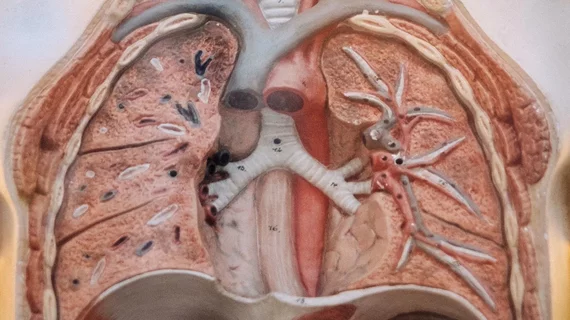Ultra low-dose CT proves precise at finding solid lung nodules
Using CT with radiation doses as low as those from plain x-rays, researchers in Australia were able to catch sold lung nodules with 98.5 percent sensitivity and 100 percent specificity. And the outstanding accuracy held regardless of the patient’s body mass index or sex.
Alistair Miller, MD, and colleagues at Monash University described their work, which used model-based iterative reconstruction, in a study published online March 1 in Clinical Radiology.
The team had 99 patients scanned for lung-nodule surveillance with both low-dose (1.67 mSv) and ultra low-dose (0.13 mSv) CT. They then had two experienced thoracic radiologists read the image pairs independently, blinded and in random order.
The researchers found very good inter-rater agreement on nodules of 4 millimeters or more for both the low- and ultra low-dose scans. Overall, 199 nodules were recorded by both radiologists on the low-dose CT, while 196 were recorded on the ultra low-dose version.
Along with the high sensitivity and specificity, the authors calculated a positive predictive value of 100 percent and a negative predictive value of 88.4 percent for the ultra low-dose imaging. They found no significant falloff in sensitivity when comparing the lowest to highest quartile of body mass index, smoking status or sex.
Ultra low-dose CT with model-based iterative reconstruction “is able to detect solid lung nodules at a radiation dose comparable to plain chest radiography,” the authors concluded. “In addition to other measures to reduce medical radiation exposure, this technique, [which] results in more than 10-fold reduction in radiation dose, could dramatically reduce cumulative radiation exposure.”
They added that ultra low-dose CT with their iterative reconstruction or a similar technique could become a first-line imaging choice for surveilling solid lung nodules.

